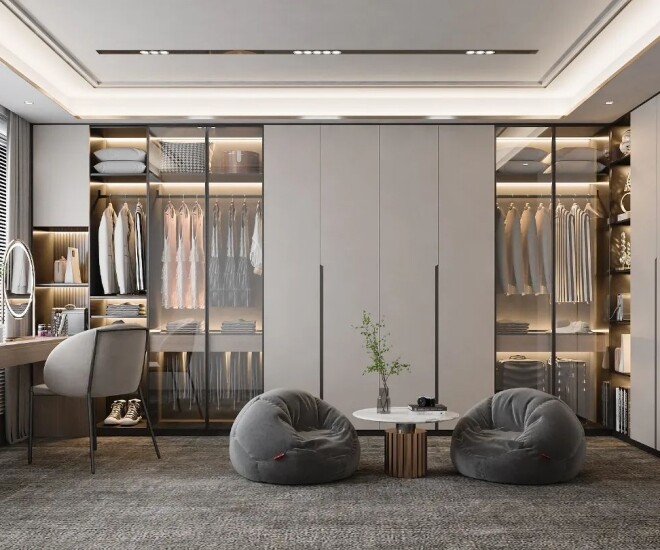One of the significant advantages of installing ceiling-height wardrobes is the increased storage capacity they offer. By utilizing the space above, you can accommodate more belongings, thereby reducing clutter in your home.
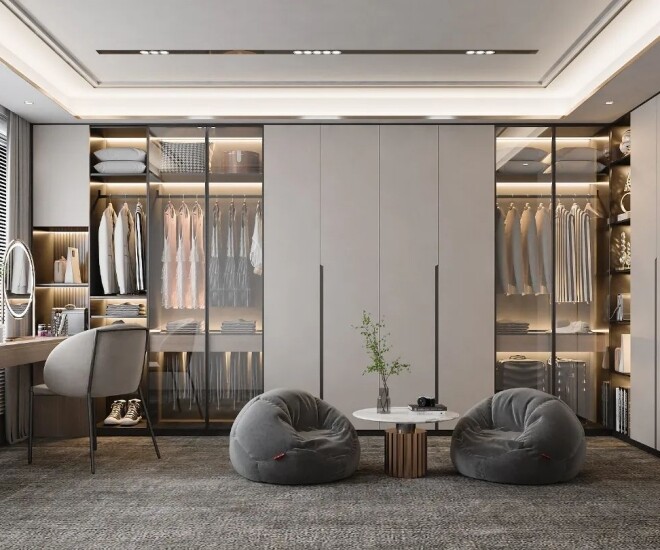
Additionally, ceiling-height wardrobes help prevent dust accumulation in empty spaces. If the wardrobe doesn’t reach the ceiling, these gaps can become dust traps, affecting the hygiene and health of your household. Thus, installing ceiling-height wardrobes ensures not only aesthetic appeal but also a cleaner and safer living environment.
Why are more people opting against ceiling-height wardrobes?
Despite the benefits, more people are choosing not to install ceiling-height wardrobes due to some drawbacks:
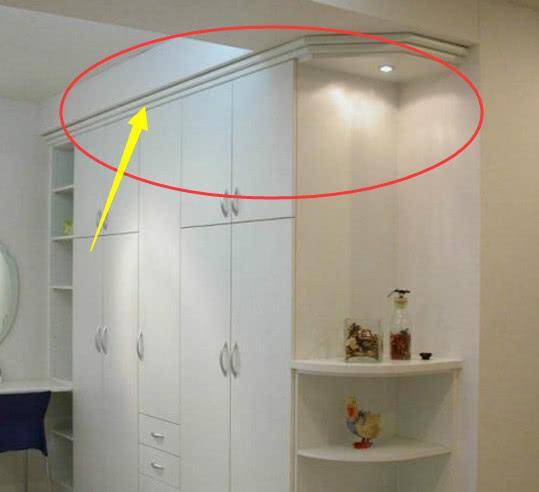
– Increased Costs
Ceiling-height wardrobe designs require additional boards and accessories, resulting in higher overall expenses. The upper cabinets need to be sturdily supported to ensure stability and load-bearing capacity.
Consequently, thicker wood panels and stronger connections are necessary, driving up production costs.
– Inconvenience in Use
While ceiling-height wardrobes offer more storage space, they can be inconvenient to use. The upper compartments may be too high, requiring the use of a ladder or stool to access, which can be hazardous.
Moreover, due to the height, some people may choose not to utilize the top compartments at all.
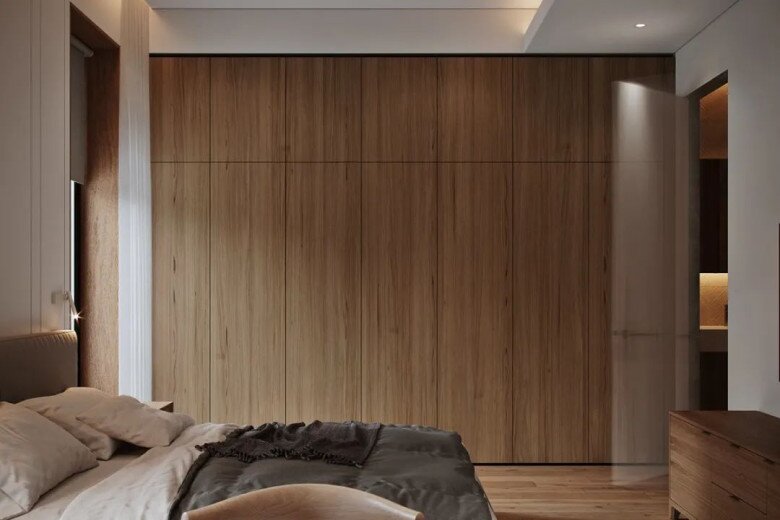
– Door Distortion
With an average height of 2.5 meters, ceiling-height wardrobes often face issues with their doors. The large size of the doors not only reduces stability but also makes them prone to heat-induced expansion and distortion.
Frequent use may also cause the doors to become difficult to close, especially over time. However, you can mitigate this problem by considering high-quality hinges and using materials that resist expansion, thus enhancing the durability and functionality of the wardrobe doors.
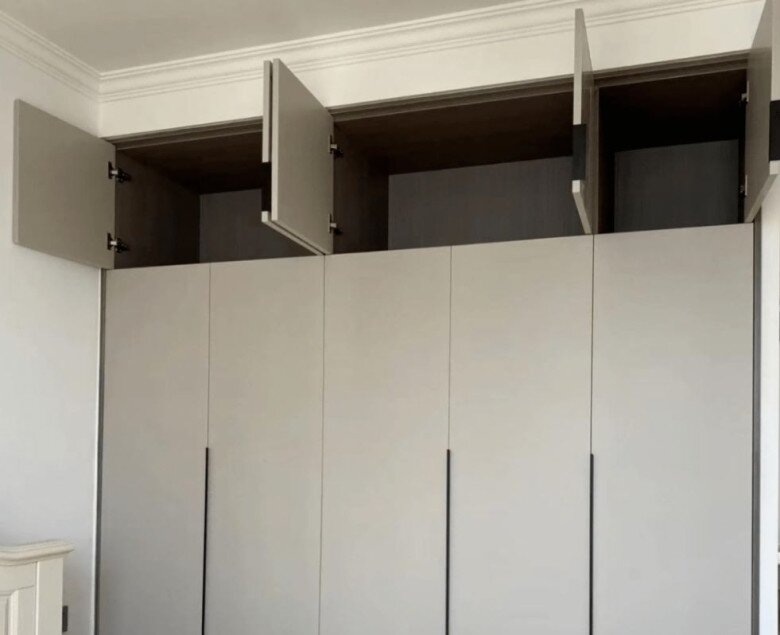
Wardrobe Design That Stays Timeless for the Next Decade
– Use Gypsum Board to Connect the Wardrobe and Ceiling
When you choose not to install a ceiling-height wardrobe, there will be a gap between the wardrobe and the ceiling, which can accumulate dust and be difficult to clean. In this case, you can use gypsum board to seal the gap.
First, measure the size and shape of the gap to choose the appropriate type of gypsum board. Before installation, clean the dust from the gap. Then, use specialized adhesive to attach the gypsum board to the desired location. If the gap is large, consider using expansion screws for added security.
Finally, sand and trim the installed gypsum board to ensure it blends seamlessly with its surroundings. For enhanced aesthetics, you can paint or wallpaper the gypsum board and add other decorative elements.
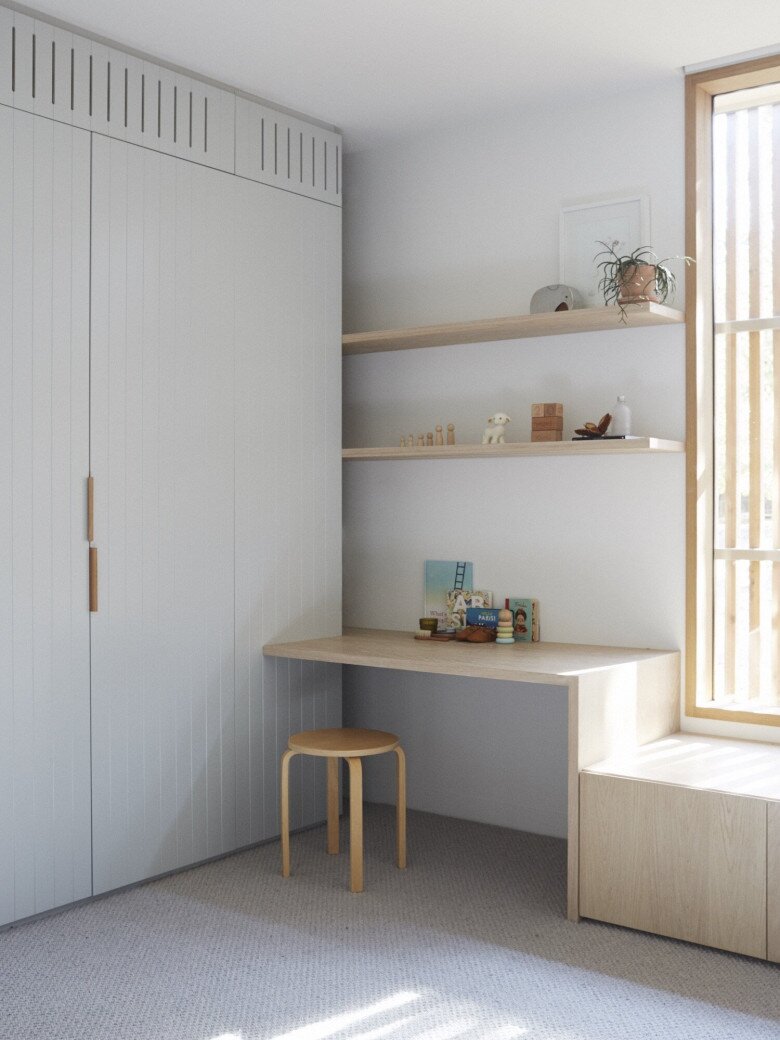
– Combine with the House Beam
When designing your interior, combining the wardrobe with the house beam is a clever solution. If your wardrobe is placed directly under the beam, opt for a style and color that complement each other to create a seamless and harmonious look. Especially if the beam is dark, a dark-colored wardrobe will unify and balance the space.
Additionally, you can achieve consistency by selecting similar materials for the wardrobe and the beam. For instance, if the beam is made of wood, a wooden wardrobe will lend a natural and cozy ambiance to your living space.

























